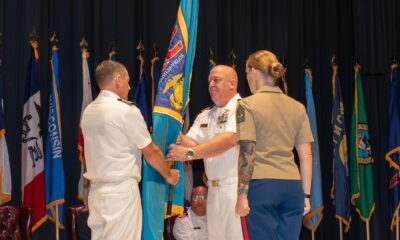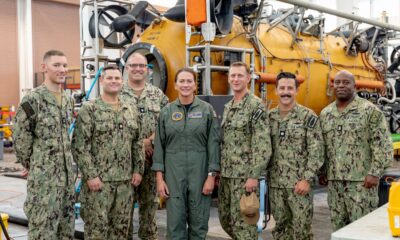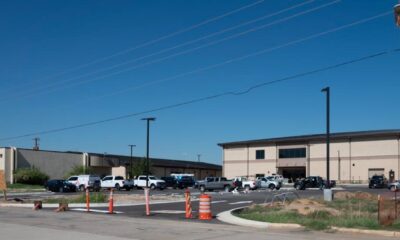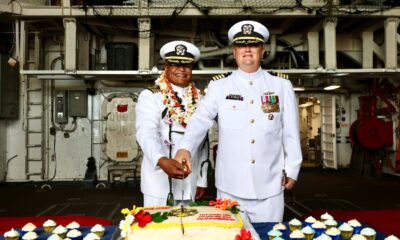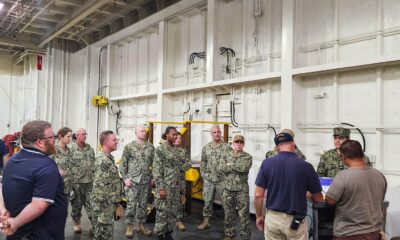All Navy Categories
VXS-1 Squadron Takes Command: Real-Time Tracking of Hurricane Francine
WASHINGTON – The U.S. Naval Research Laboratory (NRL) Scientific Development Squadron ONE (VXS-1) deployed observational buoys on Tuesday, Sept. 10, to track Hurricane Francine. This eight-and-a-half-hour mission aimed to provide real-time updates to the National Oceanographic Partnership Program (NOPP) Hurricane Coastal Impacts (NHCI) team for accurate forecasting and operational readiness.
The “Warlocks” of VXS-1 are tasked with deploying environmental buoys along the East Coast and the Gulf of Mexico during the hurricane season, which spans from June through November. The squadron responded swiftly to the rapidly evolving storm conditions posed by Hurricane Francine. “The Warlocks work closely with project representatives from NOPP to determine optimal buoy deployment coordinates for data collection,” said VXS-1 Commanding Officer Cmdr. Aaron Roberts. He noted that they deployed 16 buoys ahead of Francine’s landfall off the coast of Louisiana, including submersibles, spotters, Directional Wave Spectra Drifters, and Surface Wave Instrument Floats with Tracking.
The aircrew consisted of Cmdr. Aaron Roberts, Lt. John Leyba, Lt. Avery Nwokike, Chief Petty Officer Fred Lewis, First Class Petty Officer Amanda Moreland, Second Class Petty Officer Cody Buckingham, and First Class Petty Officer Gavin Naughton aboard the NP-3C Orion. “Hurricane predictions matter,” said VXS-1 Executive Officer Cmdr. Tony Levine. “Our small squadron is making a significant impact. Our Sailors’ professionalism and dedication made this mission possible.”
The NHCI program involves various government, industry, and academic partners, divided into specific tasks and teams. NRL’s Marine Meteorology team from Monterey, California, is assigned Task 0, while VXS-1 contributes operationally. The Marine Meteorology team leverages the NRL-developed Coupled Ocean-Atmosphere Mesoscale Prediction System for Tropical Cyclones (COAMPS-TC) to create accurate hurricane hindcasts for retrospective analysis, aiding in atmospheric re-analyses and reforecasts. COAMPS-TC also offers real-time updates to other NHCI teams for timely predictions.
“The NHCI aims to predict coastal impacts from hurricanes during the 2022-2024 seasons. These forecasts will help coastal communities better prepare for extreme weather events,” stated VXS-1 Maintenance Officer Lt. John Leyba. The NP-3C Orion, an all-weather aircraft, supports this mission with its advanced capabilities to integrate science and technology projects. The aircraft offers impressive endurance, altitude, and speed, making it suitable for various research and operational tasks.
About the U.S. Naval Research Laboratory: NRL is dedicated to driving innovative advances for the U.S. Navy and Marine Corps, spanning seafloor to space and the information domain. NRL operates from Washington, D.C., with significant field sites at Stennis Space Center, Mississippi; Key West, Florida; and Monterey, California, and employs approximately 3,000 scientists, engineers, and support personnel.
For more information, contact NRL Corporate Communications at (202) 480-3746 or [email protected].

